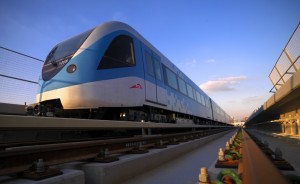Source: www.ameinfo.com
Middle East governments are spending billions on ambitious new infrastructure schemes. What will this mean for the region?

In the wake of the Arab Spring, governments across the Middle East and North Africa (MENA) region have committed to massive infrastructure spending schemes designed to head off future discontent. In the GCC alone, total infrastructure spending over the next decade has been estimated at more than $1trn, and these projects will encompass everything from energy to transport, healthcare to education, transforming the region beyond recognition.
“The MENA region is a region which is poor in infrastructure, and which needs to make massive investments in infrastructure,” says Dr Nasser Saidi, Chief Economist at the Dubai International Financial Centre (DIFC). “Infrastructure is not just a by-product of growth and development, but a driver of growth and development. Increased investment in infrastructure means increased capacity, increased productivity, and higher returns on human capital; it can transform economies and is critical for economic development.
“Investing in infrastructure is imperative at the moment, and when you build infrastructure you have to take a longer-term view – you’re not building it for the short term,” he continues. “The Arab Spring highlighted that the region has a young population with areas of high unemployment, and so it has helped focus more attention on investment in infrastructure because that will help create jobs. In addition, countries which have faced destruction and violence need to be rebuilt, and so there are huge opportunities when it comes to the reconstruction of some countries in the MENA region.”
The peoples of Iraq and Libya, in particular, will be hoping that stability brings with it much-needed investment. And when the bloodshed in Syria finally ends, its residents too will pray that hospitals, schools and other basic infrastructure requirements are met by the government in power. Yet despite these countries’ clear and urgent need for significant infrastructure overhauls, such ambitions are likely to be tempered by reality as governments search pockets all-but-emptied by the interruption in oil production which occurred as a consequence of the violence.
Large schemes bring financing challenges
According to the World Bank, through 2020 the MENA region needs around $106bn of infrastructure spending per annum. However there currently exists a financing gap of around $60bn per annum, meaning that some countries don’t have the ability to finance the work they urgently require.
Even the wealthy oil-producing countries face a dilemma: according to the same World Bank figures, oil-exporting nations will need to spend as much 11% of their GDP per annum on maintaining and developing their national infrastructure, because they have to invest in oil extraction, refining and other activities.
















